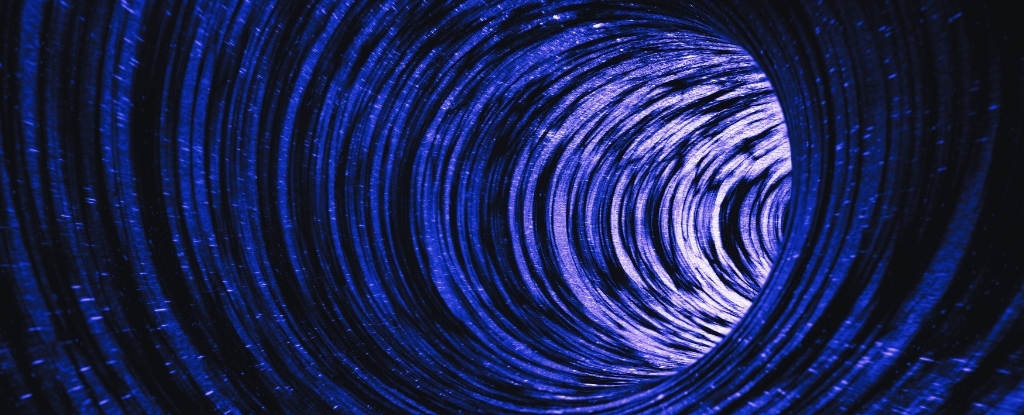A new study by astrophysicist Richard Lieu suggests that gravity can exist without mass, proposing thin, shell-like layers of ‘topological defects’ as an alternative to dark matter for explaining the gravitational binding of galaxies. This theory posits that these defects create a gravitational force without detectable mass, potentially eliminating the need for dark matter in current cosmological models
Lieu started out trying to find another solution to the Einstein field equations, which relate the curvature of space-time to the presence of matter within it. As Einstein described in his 1915 theory of general relativity, space-time warps around bundles of matter and streams of radiation in the Universe, depending on their energy and momentum. That energy is, of course, related to mass in Einstein’s famous equation: E=mc2. So an object’s mass is linked to its energy, which bends space-time – and this curvature of space-time is what Einstein described as gravity, a notch more sophisticated than Newton’s 17th-century approximation of gravity as a force between two objects with mass. In other words, gravity seems inextricably linked to mass. Not so, posits Lieu.
In his workings, Lieu set about solving a simplified version of the Einstein field equations that allows for a finite gravitation force in the absence of any detectable mass. He says his efforts were “driven by my frustration with the status quo, namely the notion of dark matter’s existence despite the lack of any direct evidence for a whole century.” Lieu’s solution consists of shell-shaped topological defects that might occur in very compact regions of space with a very high density of matter. These sets of concentric shells contain a thin layer of positive mass tucked inside an outer layer of negative mass. The two masses cancel each other out, so the total mass of the two layers is exactly zero. But when a star lies on this shell, it experiences a large gravitational force dragging it towards the center of the shell. “The contention of my paper is that at least the shells it posits are massless,” Lieu says. If those contentious suggestions bear any weight, “there is then no need to perpetuate this seemingly endless search for dark matter,” Lieu adds.
The next question, then, is how to possibly confirm or refute the shells Lieu has proposed through observations. “The increasing frequency of sightings of ring and shell-like formation of galaxies in the Universe lends evidence to the type of source being proposed here,” Lieu writes in his paper. Although he admits that his proposed solution is “highly suggestive” and cannot alone discredit the dark matter hypothesis. “It could be an interesting mathematical exercise at best,” Lieu concludes. “But it is the first [mathematical] proof that gravity can exist without mass.”
The study has been published in Monthly Notices of the Royal Astronomical Society.
it’s actually called mavity
I’m totally unqualified to comment on this, but something has always itched in my brain about dark matter. It smacks, to me, to be the aether of the 21st century.
It kind of is. It’s an extra variable introduced to account for a bunch of things that aren’t adding up.
Aether was the same thing, until people discovered electromagnetic fields. People knew light was a wave. Waves travel faster through more solid mediums. Light is pretty damn fast. Space is pretty empty.
Things didn’t add up. Light is simultaneously traveling through possibly the stiffest material in the known universe while also through nothing at all. People had to come up with Aether to try to explain that.
It was wrong, but it was an obvious placeholder acknowledging that something huge is missing from our current theories.
I’m not sure that they saw it as a “placeholder” at the time. It wasn’t until Mickelson and Morley demonstrated that the fixed frame of reference demanded by aether wasn’t there, paving the way for Relativity, that it was abandoned.
I don’t see people treating Dark Matter an a placeholder right now either.
But, like I said, I’m not qualified to comment.
These sets of concentric shells contain a thin layer of positive mass tucked inside an outer layer of negative mass.
So how much evidence is there for negative mass, then? Sounds like just replacing one unknown with another.
Moreover, as the width of the two Gaussians tends to zero, there is no finite spherically symmetric region (be it cavity or shell) over which the integral of ρ(r) yields a resolvably negative mass m(r) and its potentially undesirable consequences.
Huh… I’m not smart enough to comment on the validity of this but it seems interesting.
Basically my take on it. It’s a new
theoryhypothesis on gravity, but I’m not equipped to properly peer review it. For me, it’s an interesting read and is from a reliable source.It’s a hypothesis - we need to be able to test it before it can become a theory. Think of this along the same lines as the solutions of the field equations that allow for black holes to be wormholes, or the correct configuration of spacetime can allow you to travel through time.
It’s certainly interesting though
I’m not saying it’s dark matter
But it’s dark matter





